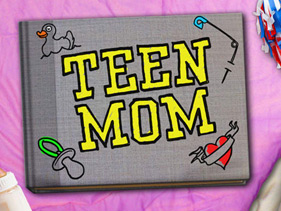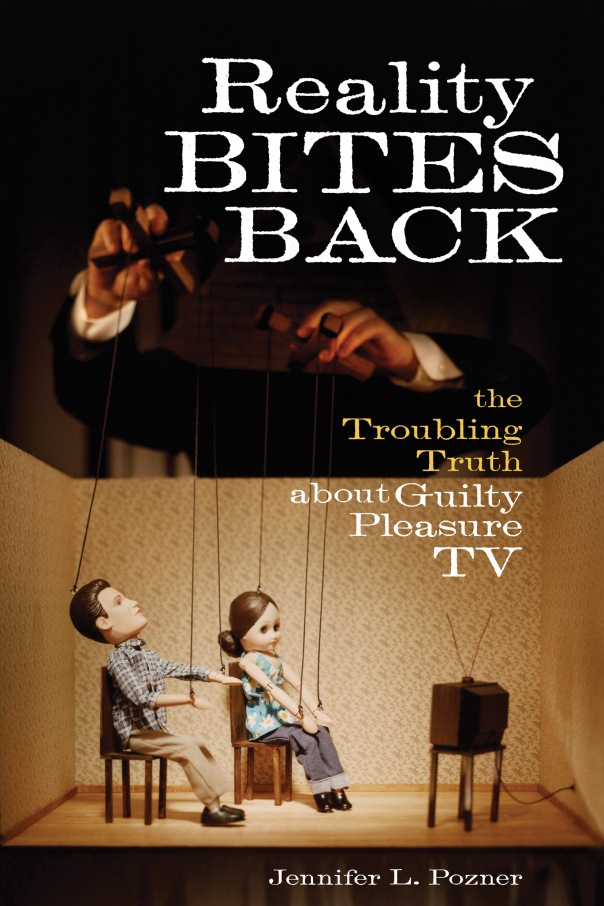As one of the most famous and loved brands, MTV seeks to speak to and engage with a young and active audience. 63% of the networks audience is ages 15-34. On Average, MTV’s audience owns eight devices and makes 48 digital communications per day, so its hyper connected and highly engaged audience has more interactions with its brand and content than ever before. You could say MTV’s new demographic is tech savvy when it comes to the media (Viacom).
Recently it seems that MTV is reaching out to young girls on with shows such as “Teen Mom” ad “16 and Pregnant.” The racial/Ethnic demographics of the girls on the show are representative of the teen population in the United States, but not of the population of new teen mothers. Across episodes, 32 of the 47 featured teen moms are white, non-Hispanic. Most girls did not live in two parent households at the time of pregnancy, which is consistent with broader statistics of teens giving birth (Rosati, 557).
Some audiences believe that “Teen Mom” and “16 and Pregnant” are good shows that portray positive messages. However, others believe that these shows are sending the wrong message to families and teenage girls. This article hypothesizes that the family backgrounds of the viewer might determine whether they focus on the positives or negatives of the show.
Many MTV shows are broadcasting to young women. However, these shows are portraying the wrong image of what it means to be a female in America. Jennifer Pozner discusses this image in her book “Reality Bites Back.” The book looks at how reality TV affects our beliefs, our behavior and our culture. Reality Bites Back deconstructs reality TV’s twisted fairytales and demonstrates that this genre has a damaging impact on the viewers’ intellectual and political development (Pozner). Pozner’s goal is to arm the reader with the tools they need to understand and challenge media stereotypes, and to advocate healthier alternatives.
MTV was conceived for a specific target audience- a youth audience-the buyers of rock and roll (demographics when MTV first became popular). MTV’s concept originators found themselves in the difficult position of having to interpret the symbolic interests of a perceived audience, guided by a demographic profile, and the vague content directives implied in the MTV concept (Lewis 27). Soon enough gender inequality became a conflict among the MTV content and demographic. Female musicians are discriminated against in videos and shows that portray them as sex objects. Because young, female viewers look up to many of the characters on MTV, consequences such as self-objectification begin to appear (Grabe). MTV may be associated with self-objectification issues among its viewers, and in turn, predict a number of body related consequences. Women all over the world, of different race, ethnicities and backgrounds, are being influenced by the images MTV portrays. MTV India has an affect o how young, middle-class women view their families and lifestyles (Cullity, 96). As MTV begins to focus on the “New Millennial” audience (Chozick), they start to develop more and more reality shows that affect the behaviors of these young viewers.
CHOZICK, AMY. “Longing to Stay Wanted, MTV Turns Its Attention to Younger Viewers.” New York Times 18 June 2013: B4. Social Sciences Full Text (H.W. Wilson).
Cullity, Jocelyn, and Prakash Younger. “Sex Appeal And Cultural Liberty: A Feminist Inquiry Into MTV India.” Frontiers: A Journal Of Women Studies 25.2 (2004): 96-122. Humanities Full Text (H.W. Wilson).
Grabe, Shelly, and Janet Shibley Hyde. “Body Objectification, MTV, And Psychological Outcomes Among Female Adolescents.” Journal Of Applied Social Psychology 39.12 (2009): 2840-2858. Social Sciences Full Text (H.W. Wilson).
Lewis, Lisa A. Gender Politics and MTV: Voicing the Difference. 27-56. Philadelphia: Temple UP, 1990. Print.
Pozner, Jennifer L. Reality Bites Back: The Troubling Truth about Guilty Pleasure TV. Berkeley, CA: Seal, 2010. Print.
Rosati, Clayton. “MTV: 360° of the Industrial Production of Culture.” Transactions of the Institute of British Geographers 32.4 (2007): 556-75. JSTOR
“Study: Viewers’ Family Background Affects How They React to MTV Shows ’16 And Pregnant,’ ‘Teen Mom’.” States News Service. Indiana University Media Relations, 22 May 2012.


